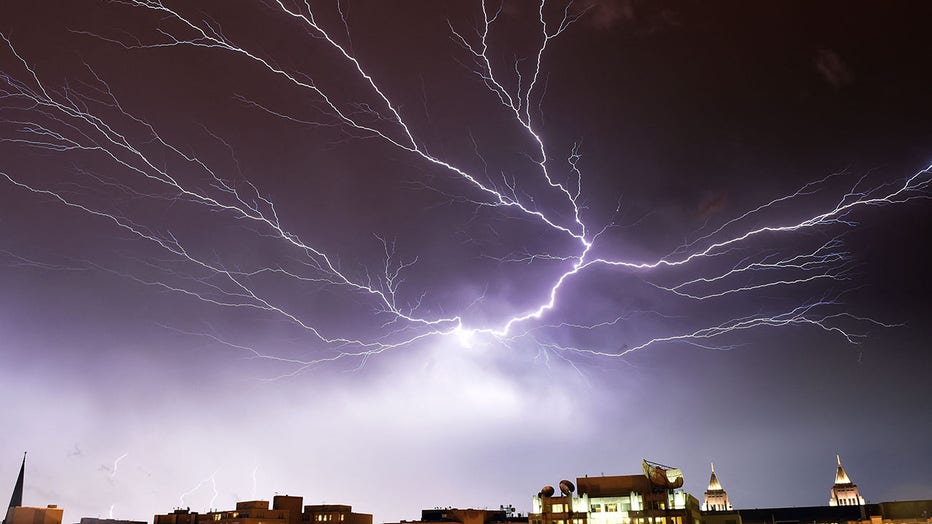Where, how often does lightning strike in US? New report explains

Lightning: 7 myths debunked
There are several myths floating around that many believe to be absolutely true, but here's what the facts say about those myths.
Every year, lightning strikes kill or injure about 250,000 people around the world, and each year, insurance pays nearly $1 billion in claims for lightning damage.
In an effort to improve forecasts and prevent damage, a research team, led by meteorologist Chris Vagasky, used six years of data from the National Lightning Detection Network (NLDN) to study where and how often lightning strikes occur in the United States.
"Knowing the reliably documented number of cloud-to-ground lightning flashes and ground contact points has significant impacts," the research authors wrote in the report, published Feb. 27 in the American Meteorological Society journal.
How much lightning strikes the US
According to Vaisala, the Global Lightning Dataset 360 network detects more than two billion lightning events each year, consisting of both in-cloud pulses and cloud-to-ground strokes.

Lightning brightens the night sky over Washington, DC, during a rainstorm on April 20, 2015. (Credit: MLADEN ANTONOV/AFP via Getty Images)
Meanwhile, researchers found that the U.S. averages 23.4 million flashes, 55.5 million strokes and 36.8 million ground strike points each year.
That said, with improved forecasting, lightning fatalities have steadily decreased since 1940, and now average about 27 per year.
Where lightning strikes most often
Because of climatological and geographic variations, the report found that lightning is not uniformly distributed throughout the U.S.
According to Vagasky, the basic ingredients for thunderstorms are warm and moist air near the ground with cooler, drier air above it and a way to lift the warm moist air. Anywhere those ingredients are present, lightning can occur.

Stunning video: Bolt of lightning strikes parking lot
Cameras atop a communications tower at the St. John the Baptist Parish Sheriff's Office in Louisiana were able to capture a stunning image of a bolt of lightning that struck a parking lot on Wednesday. (Credit: Facebook.com/StJohnParishSheriff / FOX Weather)
"This happens most frequently near the Gulf Coast, where the sea breeze helps trigger thunderstorms most days in the summer. Florida in particular is a hot spot for cloud-to-ground lightning strikes," Vagasky said.
The data revealed that the greatest concentration of lightning is located near the Gulf Coast and Southern Plains, including Florida, southern Louisiana, southern Mississippi, and portions of Texas, Oklahoma, and Kansas.
The lowest concentration of lightning is located in the western U.S. along the coast of the Pacific Ocean.
EARLIER: Lightning report: 2022 was a ‘year of extremes,’ with most US strikes in Texas
The team said meteorologists and emergency management teams can use this new data and their analysis to better understand how lightning typically affects their regions.
"That can help them better forecast risks and prepare the public for thunderstorm hazards," Vagasky added.
This story was reported from Los Angeles.

